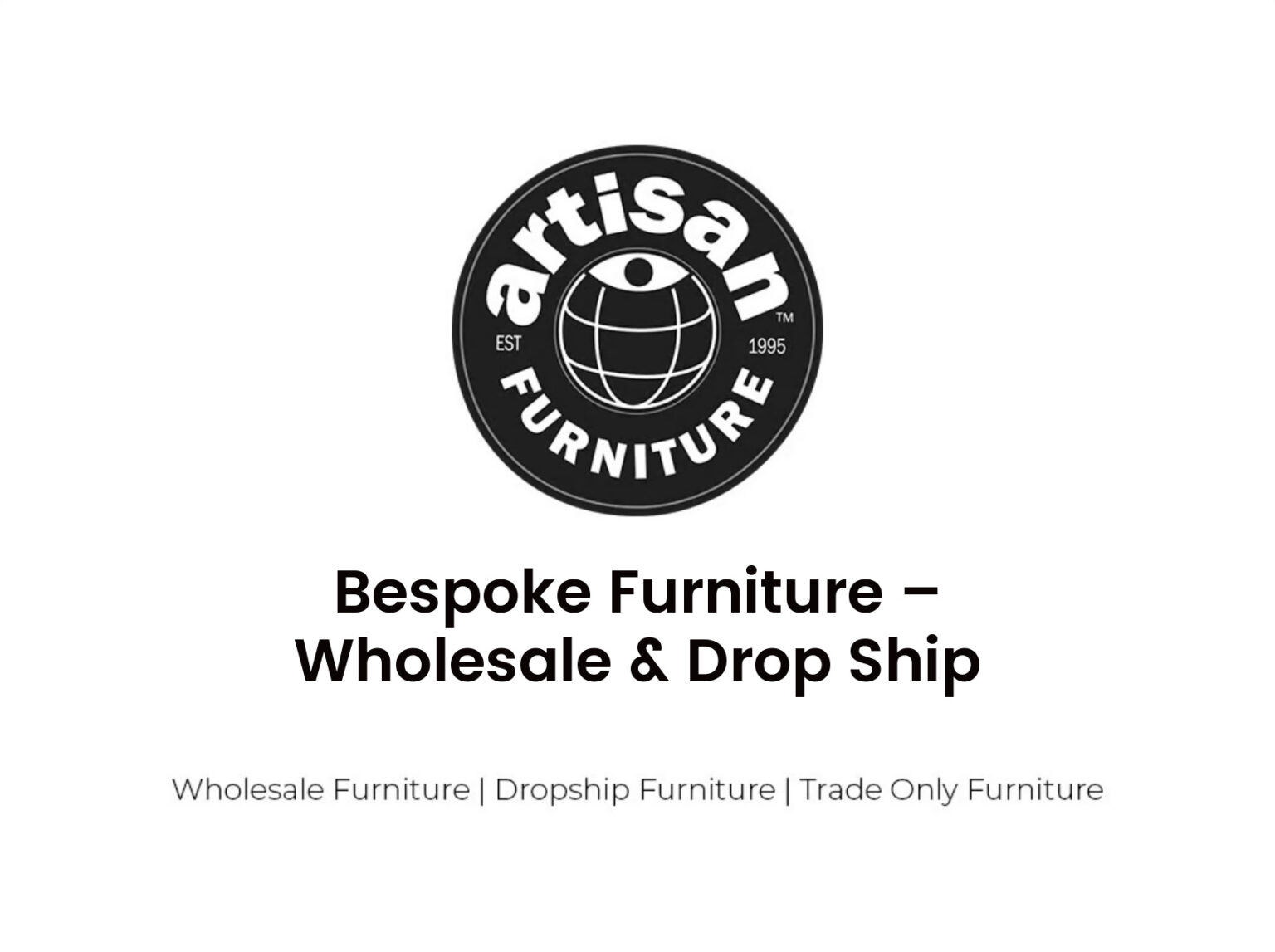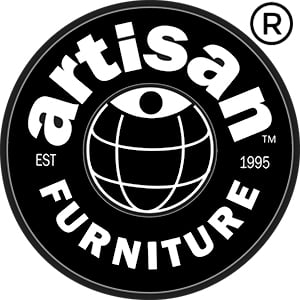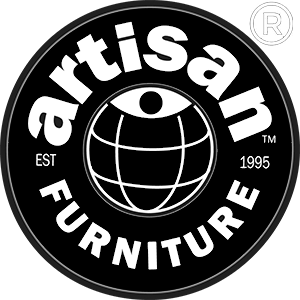
Wholesale bespoke furniture
Custom Creations: Bespoke furniture for Your Home
Here at Artisan Furniture UK, we are dedicated to providing bespoke furniture solutions that bring your vision to life. Our range of custom-made furniture collections offers the perfect opportunity to personalize and enhance your home. With a focus on luxury and artisan craftsmanship, we strive to create unique pieces that reflect your personal style and elevate your living space.
When it comes to personalized furniture, we believe that every home deserves something truly special. That’s why we offer a wide range of bespoke furniture options, allowing you to customize elements such as size, design, finish, fabric, and hardware. Whether you’re looking for a bespoke dining table, a custom-designed sofa, or a personalized dresser, we can make it happen.
Our experienced artisans work closely with you throughout the entire design process, from the initial consultation to the final delivery. We understand that each piece of furniture carries your unique taste and style, and we take pride in bringing your ideas to life. By combining traditional craftsmanship with modern design techniques, we create bespoke furniture that is both functional and visually stunning.
Key Takeaways:
- Bespoke furniture allows you to personalize and enhance your home with custom-made pieces.
- You can customize various elements of the furniture, including size, design, finish, fabric, and hardware.
- Artisan Furniture UK’s experienced artisans work closely with you to bring your vision to life.
- We combine traditional craftsmanship with modern design techniques to create functional and visually stunning furniture.
- Our range of bespoke furniture collections offers luxury and artisan craftsmanship for discerning homeowners.
The Benefits of bespoke furniture
Bespoke furniture offers homeowners a range of advantages that make it a desirable choice for those seeking tailored, designer furniture. Unlike mass-produced pieces, bespoke furniture allows individuals to create furniture that perfectly fits their space and fulfills their specific functional requirements. This level of customization ensures that every aspect of the furniture, from dimensions to design elements and finishes, is tailored to their preferences.
One of the key benefits of bespoke furniture is the ability to own unique and one-of-a-kind pieces that are not available elsewhere. By collaborating with skilled craftsmen at Artisan Furniture UK, homeowners can showcase their personal style and create a truly distinctive living environment. Each bespoke piece becomes a reflection of the homeowner’s individuality and adds a touch of exclusivity to their home.
Furthermore, bespoke furniture allows individuals to express their creativity by participating in the custom furniture design process. Whether it’s deciding on the materials, finishes, or intricate details, homeowners have the opportunity to create furniture that surpasses their expectations. This level of involvement ensures a sense of pride and satisfaction in owning a piece of furniture that is truly unique and tailored to their taste.
Key Benefits of Bespoke furniture:
- Perfect fit for the space and functional requirements
- Opportunity to own unique and one-of-a-kind pieces
- Express creativity and participate in the design process
Investing in bespoke furniture not only enhances the aesthetics of a home but also adds significant value to the living space. With tailored, designer furniture, homeowners can create a timeless and luxurious ambiance that reflects their style and personality. Experience the countless benefits of bespoke furniture by choosing Artisan Furniture UK for your custom furniture design needs.
The Process of Bespoke furniture design
The process of designing bespoke furniture at Artisan Furniture UK is tailored to each customer’s unique vision. We believe in providing a truly personalized experience that allows individuals to create their ideal piece of furniture. Here’s an overview of the process:
- Consultation: We begin with a consultation where we sit down with the customer to understand their design preferences, specific requirements, and modifications they would like to make to our existing furniture collections. This helps us gather essential information to bring their vision to life.
- Design Development: Our skilled artisans then collaborate closely with the customer to create detailed drawings and prototypes. We pay meticulous attention to detail, ensuring that every aspect of the design meets the customer’s expectations.
- Handcrafting and Materials: Once the design is finalized, our artisans begin the handcrafting process using only high-quality materials. We believe in delivering furniture of exceptional quality that stands the test of time.
The result is a truly bespoke piece that reflects the customer’s unique style and vision. Our commitment to craftsmanship and attention to detail is what sets our bespoke furniture apart.
Customization Options for Bespoke furniture
When it comes to bespoke furniture, the true beauty lies in the ability to customize every element according to your unique taste and style. At Artisan Furniture UK, we understand that every customer has their own vision for their living space, and we strive to bring that vision to life through personalized furniture creations. Our customization options encompass a wide range of aspects, allowing you to create a piece that is truly one-of-a-kind.
Size and Design
With our custom furniture design service, you have the freedom to modify the dimensions and design of your furniture to perfectly fit your space and aesthetics. Whether you need a smaller sofa to fit a cosy corner or a larger dining table to accommodate your growing family, we can tailor the size and design to your exact requirements. Our skilled artisans will work closely with you to ensure that the end result is both functional and visually pleasing.
Finish
The finish of a piece can greatly impact its overall look and feel. With our bespoke furniture, you have the opportunity to select from a variety of finishes that match the aesthetic of your home. From sleek and modern to rustic and distressed, our range of finishes caters to diverse styles. By choosing the perfect finish, you can elevate your furniture from ordinary to extraordinary.
Fabric
The fabric of your furniture plays a crucial role in its comfort and appearance. With our personalized furniture service, you can choose from a wide selection of high-quality fabrics, including luxurious velvets, durable leathers, and crisp linens. Select a fabric that complements your existing decor and expresses your unique personality. From bold patterns to understated neutrals, the choice is yours.
Hardware
Attention to detail is what sets bespoke furniture apart. To add the finishing touch to your custom creation, you can select the hardware that suits your style. From decorative knobs to elegant casters, our range of hardware options allows you to enhance the overall look and functionality of your furniture. Whether you prefer classic and ornate or sleek and minimalist, our hardware choices are designed to suit diverse tastes.
With our customization options, your bespoke furniture becomes an extension of your personal style and a reflection of your individuality. Each piece is meticulously crafted to meet your specific preferences and requirements, ensuring that you receive a truly unique and tailored product. Discover the joy of owning furniture that is made just for you – custom furniture design at its finest.
The Value of Exclusive Design
When it comes to bespoke furniture, one of the major advantages is the sense of exclusivity it brings. By creating custom-made pieces, homeowners have the opportunity to showcase their individuality and create a space that is truly unique.
Exclusive design adds tremendous value to bespoke furniture, making it all the more appealing to discerning customers who appreciate craftsmanship and luxury. When you invest in bespoke furniture, you’re not only getting a functional piece, but also a work of art that reflects your personal style and taste.
With bespoke furniture, you have the freedom to curate your own style and create an environment that is a true reflection of your personality. Whether it’s a statement-making designer piece or a subtle addition that adds a touch of luxury, bespoke furniture allows you to bring your vision to life.
Why Choose Bespoke furniture?
Choosing bespoke furniture goes beyond simply filling a space. It’s about creating a living environment that is tailored to your unique needs and preferences. Here are a few reasons why bespoke furniture is worth considering:
- Unmatched Quality: Bespoke furniture is crafted with meticulous attention to detail and using high-quality materials. Each piece is carefully handcrafted to ensure the highest level of craftsmanship and durability.
- Personalized Design: With bespoke furniture, you have the opportunity to customize every aspect of the design. From choosing the dimensions, finishes, fabrics, to selecting hardware, you have the freedom to create a piece that perfectly complements your style and space.
- Distinctive Aesthetics: Bespoke furniture allows you to stand out from the crowd. With unique design elements and tailor-made features, you can create a truly distinctive aesthetic that sets your home apart.
- Long-lasting Investment: Bespoke furniture is built to last. When you invest in customized pieces, you can expect furniture that stands the test of time both in terms of durability and timeless style.
Choosing bespoke furniture is not just an investment in your living space, but also in your personal satisfaction and enjoyment. With the ability to create something truly one-of-a-kind, you can be confident that your bespoke furniture will be a source of pride and admiration for years to come.
Considerations for Bespoke furniture
When it comes to considering bespoke furniture for your home, it’s important to weigh a few factors before making the investment. While bespoke furniture offers numerous benefits, such as custom furniture design and artisan craftsmanship, there are a few things to keep in mind.
- Price: Bespoke furniture tends to come with a higher price tag compared to ready-made pieces. This is because each item is meticulously handcrafted to meet your specific design preferences. However, the investment is well worth it for those seeking exceptional quality, luxury, and unique furniture that reflects their personal style.
- Lead Time: Unlike ready-made furniture that is readily available, bespoke furniture takes time to create. Since every piece is made from scratch, the lead time can be longer. But if you’re willing to wait for the perfect piece that is tailored to your specifications, the result will be a one-of-a-kind creation that you can cherish for years to come.
While price and lead time may be considerations, the unique nature of bespoke furniture often outweighs these factors. The ability to have a personalized piece that perfectly fits your space and reflects your individual style is a valuable investment.
No matter your considerations, at Artisan Furniture UK, we understand the importance of bespoke furniture in creating a truly exceptional home. Our team of skilled artisans is committed to delivering luxury, custom-made furniture that meets your unique vision and specifications. With our expertise in artisan craftsmanship and attention to detail, you can trust that every piece we create is a work of art.
Artisan Furniture UK: Your Destination for Bespoke furniture
Looking for the perfect bespoke furniture that combines luxury, craftsmanship, and exclusivity? Look no further than Artisan Furniture UK. With our extensive range of wholesale furniture collections and expertise in custom furniture design, we can create tailor-made pieces that exceed your expectations.
Whether you’re looking for a minor modification or a complete redesign, our skilled artisans work closely with you to bring your vision to life. We understand that each customer is unique, which is why we pride ourselves on delivering personalized furniture that reflects your individual style and enhances your living space.
With a commitment to quality and a passion for artisanal craftsmanship, each piece of bespoke furniture created by Artisan Furniture UK is a true work of art. From the initial consultation to the final delivery, we ensure that every detail is meticulously crafted to meet your exact requirements. Visit our website to explore our bespoke range and experience the luxury of custom-made furniture.
FAQ
What is bespoke furniture?
Bespoke furniture refers to furniture that is custom-made and tailored to the specific requirements and preferences of the customer. It is created to suit their individual needs, offering a unique and personalized solution.
What are the benefits of bespoke furniture?
Bespoke furniture allows homeowners to create pieces that perfectly fit their space and meet their functional requirements. It also offers the opportunity to own unique and one-of-a-kind pieces that cannot be found elsewhere, allowing individuals to showcase their personal style and create a distinctive living environment.
How does the process of bespoke furniture design work?
The process starts with a consultation between the customer and the artisans, where design preferences, specific requirements, and modifications to existing furniture collections are discussed. The artisans then create detailed drawings and prototypes, working closely with the customer to ensure the final product meets their expectations. The furniture is then handcrafted with meticulous attention to detail using high-quality materials.
What options can be customized in bespoke furniture?
Customers have the freedom to customize various elements of their furniture, including size, design, finish, fabric, and hardware. They can modify the dimensions, adjust the design elements to suit their personal style, choose a finish that matches their home’s aesthetic, select fabric that complements their decor, and even choose the hardware that enhances the overall look and feel of the furniture.
What is the value of exclusive design in bespoke furniture?
Exclusive design adds value to the furniture, making it more appealing to customers who appreciate craftsmanship and luxury. By creating custom-made pieces, homeowners can showcase their individuality and create a truly unique living space that reflects their personality and taste.
What should I consider before investing in bespoke furniture?
Before investing in bespoke furniture, it is important to consider factors such as price and lead time. Bespoke furniture typically comes with a higher price tag due to the customized craftsmanship involved, and the lead time can be longer compared to ready-made pieces. However, the unique and personalized nature of bespoke furniture often outweighs these considerations, making it a worthwhile investment for those seeking exceptional quality and design.
Why choose Artisan Furniture UK for bespoke furniture?
Artisan Furniture UK offers a wide range of wholesale furniture collections and specializes in custom furniture design. Their artisans work closely with customers to bring their vision to life, whether it’s a minor modification or a complete redesign. With a commitment to quality and a passion for artisanal craftsmanship, Artisan Furniture UK ensures that each piece of bespoke furniture is a true work of art.

